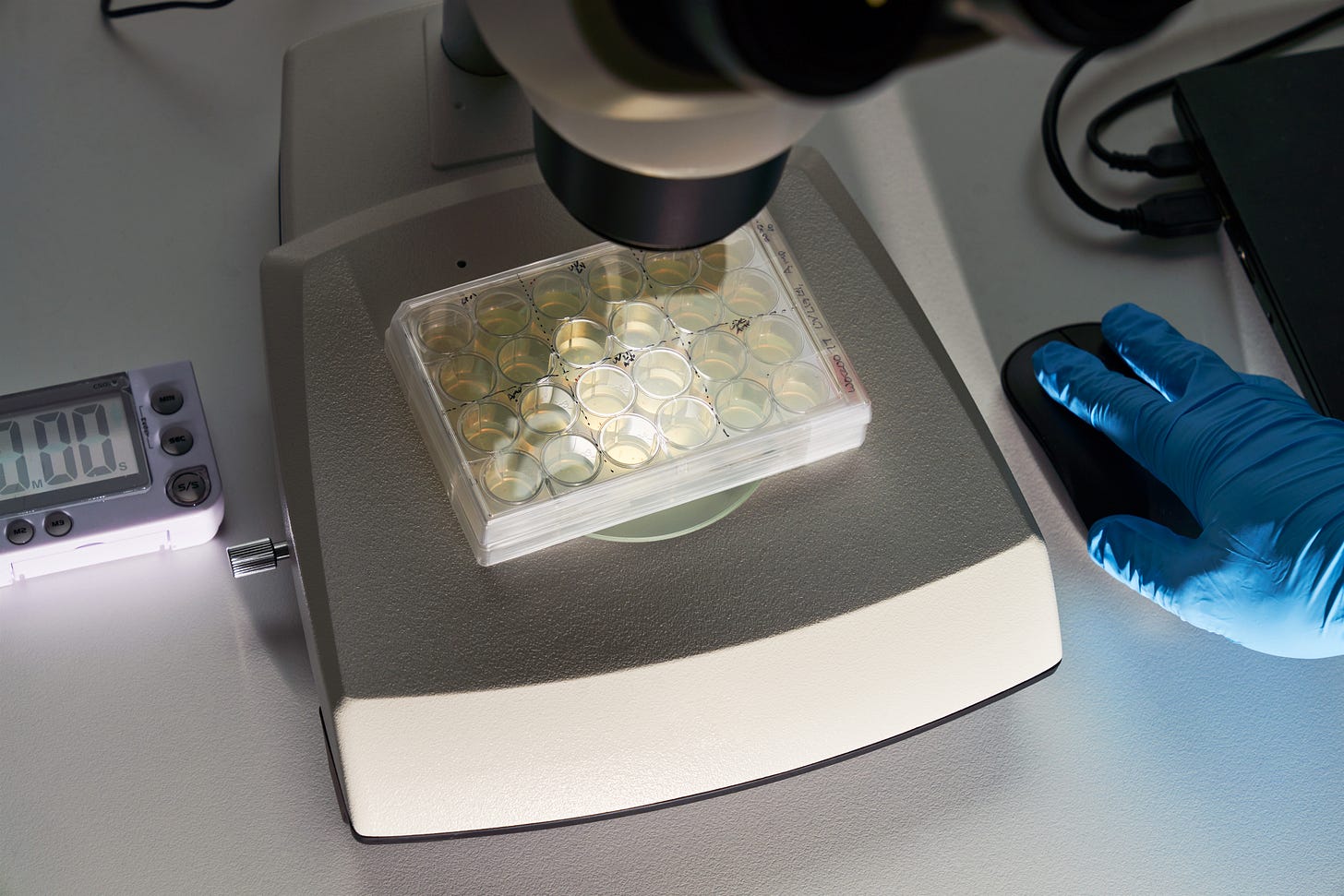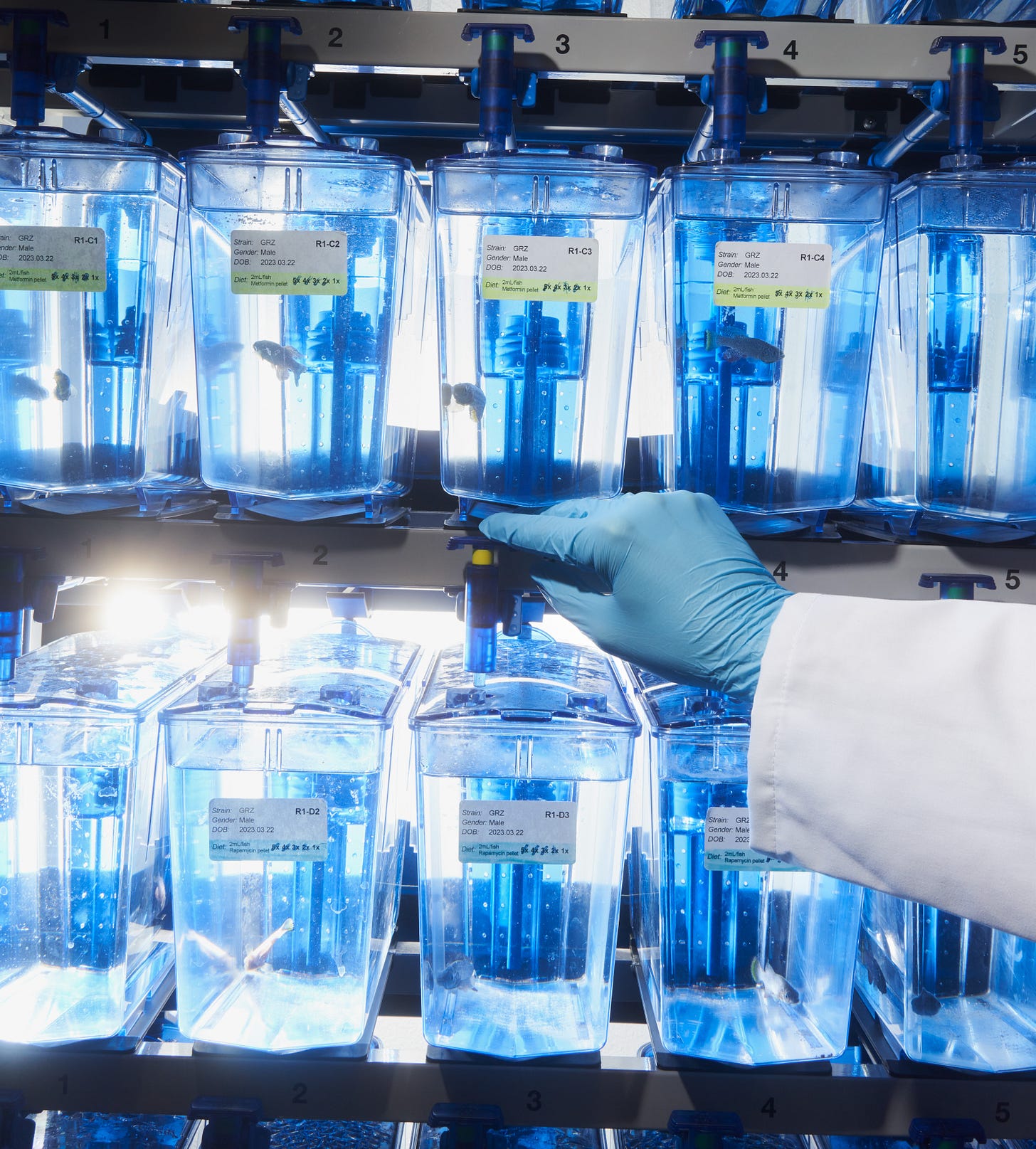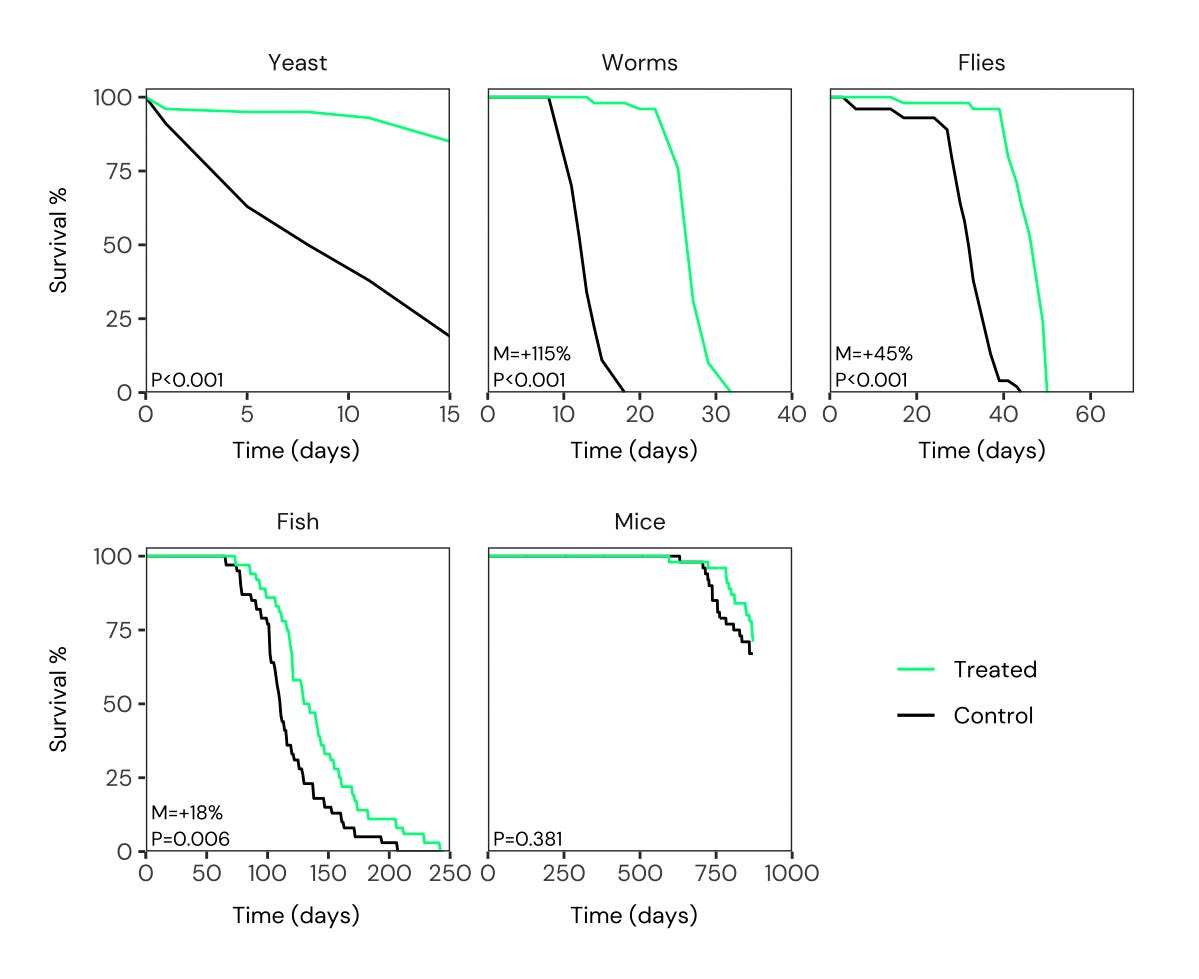Revolutionising Aging Drug Discovery
Our journey building a high-throughput screening platform for lifespan extending drugs
At EPITERNA, we're on a groundbreaking mission: to pioneer the future of drug discovery to extend life. One of our core hypotheses is that a drug that extends lifespan in multiple animal models will have more chances to translate to pets and people. In this post we will walk you through how we went from testing a few drugs in yeast to testing hundreds of molecules in multiple animal models for lifespan extension, all that within a year.
Yeast
Our exploration began with yeast, a simple yet powerful model organism. We first set out to build a high-throughput screening platform for yeast chronological lifespan (CLS). A few years ago, Alex had published a method to assess CLS in yeast by flow cytometry. This seemed like a natural choice for us and all we had to do was to miniaturise it. Yeast experiments are typically done in big flasks, that do not really allow high throughput. After only a few months our pipeline was ready, and we were able to screen hundreds of drugs for yeast CLS. The method we now use is very close to the one later published here by another group. After setting up this system in yeast we thought it would be nice to try other animal models. We had previous experience with C. elegans, so it made sense for us to tackle this as a next step.
Worms
The worm, a longstanding model for longevity studies, presented unique challenges. Traditionally, lifespan experiments on worms are done in a very manual and laborious fashion. Lifespan is typically assessed with manual poking of the worms, or visual movement assessment. Some new automated methods are starting to emerge, notably the WormBot, developed by Ora Biomedical. Because these methods were not commercially available and required some robotics and a lot of lab space, we decided to start from scratch and build our own automated high-throughput platform for lifespan in worms. By using some basic microscopy and a bit of machine learning we are now able to test hundreds of drugs per month in worms, in a fully automated manner.
Flies
Flies, another key model organism, lacked any high-throughput solution for lifespan drug testing — until now. Generally, less drugs have been tested for lifespan in flies, compared to worms and all of them completely manually. Testing usually implies some labor-intensive work, including frequent transferring of vials, and manual counting. After a few months of research, we've now developed an automated system, relying on imaging and machine learning, that lets us do away with those constraints. While the specifics remain under wraps, this innovation has significantly scaled up our testing capabilities. Here again we are now able to test hundreds of drugs for lifespan in Drosophila, every other month.
Killifish
We next explored one of the less established, but most promising animal model of aging, the killifish. To date, although this model has been set up several years ago, only 3-4 drugs have been tested in total for lifespan on killifish. One of the main issues in this model is how to reliably deliver the drug to the fish. Drugs in fish are usually delivered by diluting them in the water, IP injection, oral gavage or mixed in the food; but so far, no standardised method of delivery has really been established yet. After a few months of troubleshooting, we've developed a scalable drug delivery method in the food that now allows us to test dozens of molecules per year. Together with our two independent fish facilities, this method is enabling large-scale testing in killifish for lifespan extending drugs. With a maximum lifespan of around 6 months, we can expect a relatively quick turnaround, which is quite rare for a vertebrate.
Mice
Mice, the gold standard of longevity research, present a particular issue: high cost. It is notoriously known that lifespan experiments in mice are long and costly, which can often discourage people from even trying. One exception to date is the Interventions Testing Program (ITP), that tests around 6-8 drugs for lifespan in mice every year. Here we quickly realised that having operations in the South of Europe would allow us to dramatically reduce the cost of these experiments. We have now established two independent facilities in Spain, with thousands of mice allowing us to test tens of drugs per year. We are already about to get the results from our first experiments, and it looks promising. Importantly, we're not just assessing mouse lifespan but also studying parameters like body weight, activity, and overall health.
After a bit more than a year, we are now able to test many molecules in multiple gold standard animal models of aging. Previous attempts have been focused on testing a small number of drugs in single animals. To the best of our knowledge, we now possess the largest capacity in the world to test drugs for lifespan extension across species. Our hope is that this platform will allow us to identify new drugs that can extend lifespan in pets and people.
This post is part of a monthly series where we will be sharing our progress with the world. Next month, we will delve deeper into metrics, testing capacity and the discovery of novel drugs capable of extending lifespan. Stay tuned!
We would like to thank everyone from our amazing EPITERNA team! In particular: Alberto Parras, Grace Phelps, Soumya Banerjee, Lucas Schoenfeldt, Sebastien Guilmot, Jonas Morin, Carla Pinto, Tadeu De Oliveira, Maria Silveira, and Alex Ocampo.







